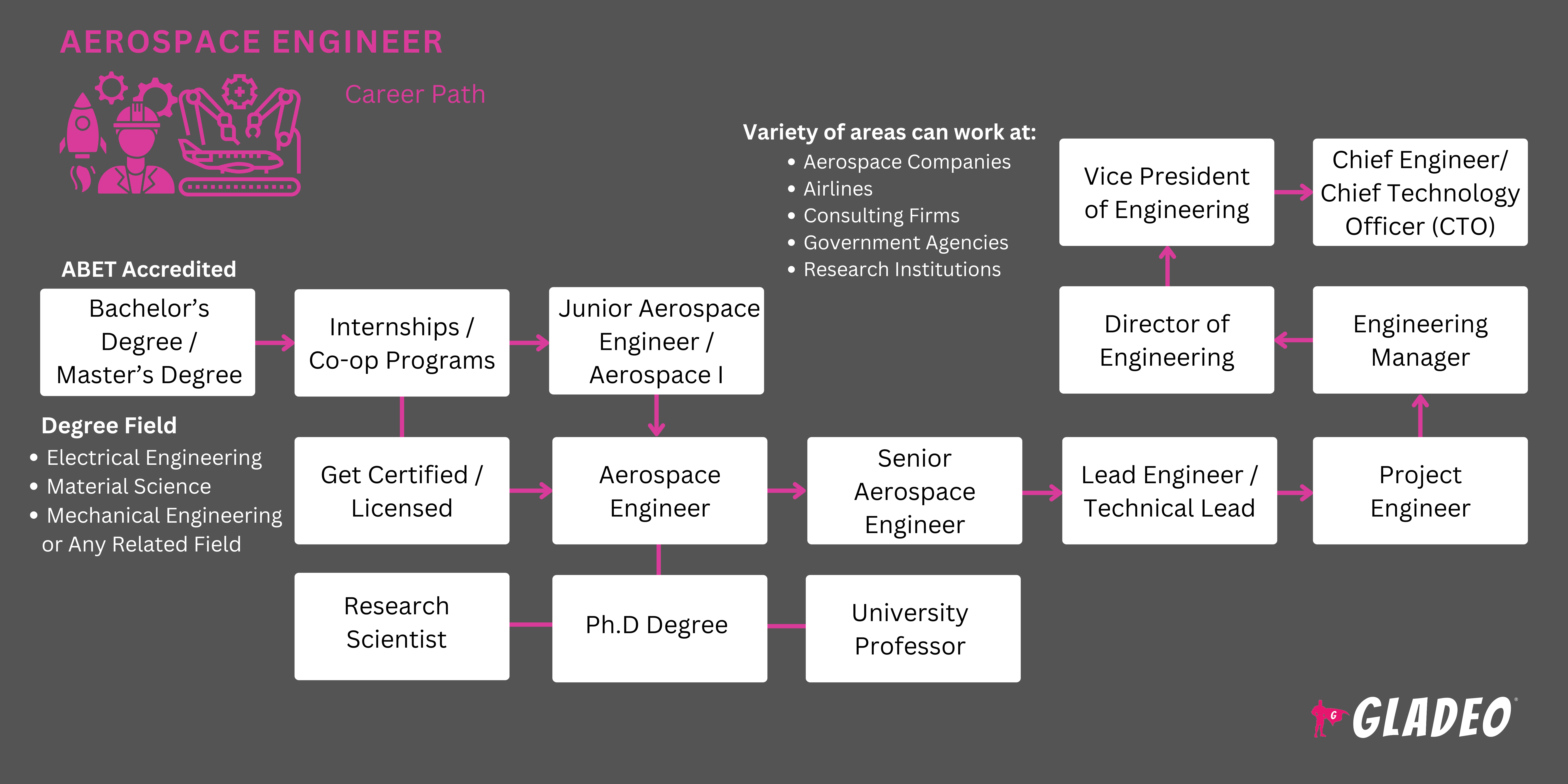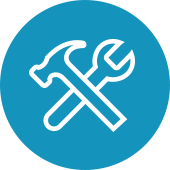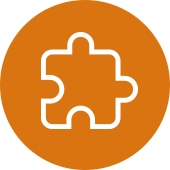聚光灯
Aeronautical Engineer, Aerospace Engineer, Aerospace Stress Engineer, Avionics Engineer, Design Engineer, Flight Controls Engineer, Flight Test Engineer, Structural Analysis Engineer, Systems Engineer, Test Engineer
The world as we know it would be dramatically different without the work of Aerospace Engineers. No more airplanes for passengers to travel easily to any place on Earth. No more satellites to aid with communications, navigation, environmental monitoring, and national defense. And, of course, no more space exploration, either. Even though we might sometimes fail to remember the contributions of Aerospace Engineers to modern society, we'd certainly notice if we didn’t have them!
Broadly speaking, workers in this field specialize in either aeronautical (i.e., commercial or military aircraft and propulsion systems) or astronautical (missiles and spacecraft, including satellites) engineering. Although there are many differences between the two specialties, there are many shared principles of physics that apply to both.
There are several subareas in which Aerospace Engineers might specialize, such as materials, aerodynamic fluid flow, thermodynamics, celestial mechanics, structural design, navigation, guidance and control, propulsion, combustion, and more. Aerospace Engineering is an extremely diverse field and it’s considered one of the hardest engineering majors to tackle. But the job outlook is strong, the pay is impressive, and job satisfaction rates fly high!
- Empowering space exploration
- Enabling people to travel around the world for business or personal reasons
- Ensuring accurate navigational capabilities via satellites
- Great income potential
- Sense of accomplishment
- Working in a dynamic field that impacts almost everyone
- Working with technologies to determine hazardous weather conditions so affected residents can be warned in advance
工作时间表
- Aerospace Engineers usually work full-time, with overtime needed in some cases to ensure projects are completed within timeframes and that work meets design and performance standards.
典型职责
- Review technical proposals to determine viability, safety, budgetary considerations, and compliance with environmental policies
- Determine if the company can fully meet customer requirements
- Oversee the lifecycle of aircraft/aerospace parts, equipment, and vehicles from design to fabrication, manufacturing, and testing
- Analyze product designs against aerospace engineering principles
- Research vendors and suppliers to source the most suitable solutions
- Set quality assurance and testing standards and ensure designs meet the criteria
- Establish completion timeframes and track progress
- Design products and systems using math models or computer analysis
- Run tests and experiments to ensure prototypes function per specification while withstanding anticipated stressors
- Investigate problems, perform diagnostics, troubleshoot and inspect parts or products that don’t operate within parameters due to malfunction or damage
- Write reports and maintain documentation and records
- Study aerospace impacts on the environment and continue to find ways to reduce emissions
- Evaluate the viability of alternative fuels
其他职责
- Research and develop new aerospace technologies and potential capabilities
- Train and supervise other team members, as needed
- Stay up to date on industry changes and technological advancements
- Attend professional organization events to share information and learn from others
软技能
- Activities Coordination
- 分析性
- 注重细节
- Business acumen
- 合作
- 创造力
- 批判性思维
- 果断
- 演绎推理和归纳推理
- 注重细节
- 独立
- 监测
- 目标
- 有组织
- 病人
- 敏锐
- 解决问题
- 阅读理解
- 注重安全
- 较强的沟通能力
- Visualization
技术技能
- Aerospace design principles
- Applied physics
- 计算机辅助设计
- Engineering and technology
- Knowledge of fabrication and manufacturing
- Mechanical aptitude
- Operations analysis
- Strong science and math skills (including algebra, linear algebra, trigonometry, calculus, and statistics)
- Aerospace product and parts manufacturing
- Engineering services
- Federal government, excluding the postal service
- Navigational, measuring, electromedical, and control instruments manufacturing
- Research and development in the physical, engineering, and life sciences
- Aerospace products, parts, and related fields of manufacturing
- Defense contractors (such as Boeing, Airbus, Lockheed Martin, General Dynamics, GE Aviation, Northrop Grumman, Raytheon, etc.)
- Engineering services
- Government agencies (such as NASA, National Geospatial-Intelligence Agency, National Reconnaissance Office. U.S. Air Force, U.S. Space Force, etc.)
- Private companies (such as SpaceX, Blue Origin, Virgin Galactic, etc.)
- Research and development centers
In the realm of Aerospace Engineering, the stakes are sky-high! The safety of countless people rests in the hands of these experts responsible for the planes we fly in—or that fly over our heads!
They are entrusted to ensure safe rocket and missile launches and to develop aircraft capable of deterring foreign militaries. Because of the sensitive nature of their work, Aerospace Engineers frequently need to obtain a security clearance requiring a background check. In addition, they must maintain their clearances through good personal conduct, managing debt, avoiding conflicts of interest or security violations, and staying away from drug or alcohol-related incidents (to name only a few of the behaviors that impact one’s security clearance and jeopardize employability).
A common sacrifice in this field is the possible need for frequent moves. The aerospace industry can experience ups and downs depending on demand and economic factors. 2017 saw top companies in the industry laying off engineers to cut costs, causing many workers to have to relocate to find jobs. Sometimes workers might even move overseas to find suitable jobs for their unique skills.
Automation is ubiquitous and the aerospace industry is taking full advantage. Thanks to automation technologies and processes, workplace hazards related to aerospace manufacturing can be reduced, allowing human workers to focus on safer tasks. This trend is projected to continue, which means engineers must stay on top of how automation might affect their work tasks.
Another trend impacting pretty much every industry is the push for environmentally-friendlier business. Per the BBC, “around 2.4% of global CO2 emissions come from aviation.” Combined with other gasses and vapor trails, research indicates aviation accounts for ~5% of global warming. That’s why the industry continues to seek lighter, stronger materials which lead to less aircraft fuel consumption and fewer emissions.
A third major change seems to be the increased outsourcing of engineering services to speed up overall manufacturing times while boosting quality for specific components. Any time work is outsourced, engineers need to take notice of how it impacts their own jobs in the short and long-term.
The love of flying and space exploration has inspired countless Aerospace Engineers to take up this exciting field of study and join the storied ranks of its accomplished figures. In their youth, these would-be engineers may have been aviation buffs as well as science fiction fans eager to become part of something bigger, to contribute to the legacy of aeronautical and astronautical achievements. They might have wondered if one day they could join the aerospace community to work on the next technological innovation that would revolutionize the world. As engineers, they likely enjoyed tinkering with things, learning how mechanical objects worked and perhaps figuring out how to improve them.
- Aerospace Engineers need an ABET-accredited bachelor’s in aerospace engineering or a closely related engineering field
- Many students opt to pursue a dual bachelor’s/master’s which can save time and money
- Common classes to expect may include:
- Acoustics
- 空气动力学
- Celestial mechanics
- Combustion
- Guidance and control
- Instrumentation
- Materials
- Mechanics
- Navigation
- Propulsion
- Robotics
- Thermodynamics
- Many programs partner with local businesses in the industry to offer internships and cooperative experiences that boost student understanding and develop practical skills
- Optional certifications are available, depending on academic and work prerequisites:
- Aerospace Medical Association - Certification in Aerospace Physiology
- American Society for Quality - Certified Reliability Engineer
- American Society of Mechanical Engineers International - Geometric Dimensioning & Tolerancing Professional - Technologist
- ETA International -
- ARINC Fiber Optics Technician
- Fiber Optics Evaluation & Endface Cleaning
- National Geospatial-Intelligence Agency - GEOINT Professional Certification Aeronautical
- Society of American Value Engineers -
- Certified Value Specialist
- Value Methodology Associate Certification
- SpaceTEC -
- Composites Certification
- Aerospace Manufacturing
- Vehicle Processing Certification
- Some aerospace employers, especially in the defense sector, require workers to pass a thorough background check and obtain a security clearance
- Citizenship may be needed for some clearance situations
- 考虑学费、折扣和当地奖学金机会(除联邦补助外)
- Think about your schedule and flexibility when deciding whether to enroll in an on-campus, online, or hybrid program. Many Aerospace Engineering concepts are best learned in person
- Check out the program’s faculty awards and accomplishments to see what they’ve worked on
- If attending on campus, look at the program’s facilities and equipment
- 查看就业统计数据和有关该计划校友网络的详细信息
- Volunteer for school activities where you can learn to work effectively as a team and manage projects
- Sign up for HS classes in chemistry, physics, advanced math, computer programming, drafting, and writing
- Look for internships and cooperative experiences in college
- Gain part-time work experience in a manufacturing facility to learn about operations
- Write down the names and contact info of people who might serve as future job references
- Study books, articles, and video tutorials related to different aspects of Aerospace Engineering
- Aerospace engineering is a broad discipline so do your research to specialize in a field that is right for you
- Pin down the area a specialization as soon as possible to tailor your education accordingly
- Compile a list of potential employers, then review their website career pages
- Talk to seasoned engineers about how they got started and what their day-to-day is like
- Join professional organizations to learn, share, make friends, and grow your network (see our list of Resources > Websites)
- Finish relevant certifications when you can, to bolster credentials and make you more competitive in the job market
- Start drafting your resume early and keep adding to it as you go, so you don’t lose track of anything

- Tell your network you are ready to work!
- Make a profile on job portals such as Indeed, Simply Hired, Glassdoor, Zippia, and relevant professional organization job boards
- Look for jobs related to your area of specialization. Screen ads carefully and only apply if you’re fully qualified
- Tailor your resume to the job you’re applying for, versus sending out the same resume to every employer
- Aerospace-related apprenticeships or cooperative experiences can help get your foot in the door. They look great on resumes plus may yield some personal references for later. You might even get a job offer from that company in the future!
- Reach out to working Aerospace Engineers to ask for job-seeking tips
- Move to where the most job opportunities are! Figure out where the top employers are primarily based
- The states with the highest employment level for Aerospace Engineers are California, Texas, Florida, Washington, and Alabama
- Many big companies recruit grads from local programs, so ask your college’s program or career center for help connecting with recruiters and job fairs
- They might also offer assistance with resume writing and mock interviewing
- Review Aerospace Engineer resume templates to get ideas for wording and formats
- List all education, skills, training, and work history on your resume
- Consider having your resume drafted or reviewed by a professional resume writer or editor
- Ask former teachers and supervisors ahead of time if they’ll serve as personal references. Don’t catch them off guard by listing their contact info without permission
- Study Aerospace Engineer interview questions to see what you might be asked
- Make an account on Quora to ask job advice questions from workers in the field
- Dress appropriately for job interview success!
- Depending on the type of promotion you want, a Professional Engineering license could help. This involves passing two exams — the Fundamentals of Engineering and Professional Engineering, in addition to holding an ABET-accredited bachelor’s plus four years of work experience
- Stay on top of the changes in technology through online courses, a master’s degree, or advanced certifications
- Build your reputation as an engineer who is accurate, accountable, reliable, and innovative
- Learn all you can from more senior engineers. Develop the mindset of a lifelong learner
- Make strong connections within the company as well as with business partners, stakeholders, and the industry at large
- Demonstrate leadership as well as teamwork, depending on the situation. Raise the bar high and set an example for others to follow
- Stay engaged with professional organizations by giving lectures at events, publishing articles, and contributing to the field
- Win awards that can help enhance your professional reputation
Schedule a conversation with your supervisor or manager to discuss opportunities for advancement - If needed, consider applying to new jobs with more promotion potential. You might even have to be willing to move to a new state…or new country!
网站
- Accreditation Board for Engineering and Technology (ABET)
- 航空航天工业协会
- Aircraft Electronics Association
- 飞机拥有者及飞行员协会
- Air and Space Forces Association
- American Astronautical Society
- American Indian Science and Engineering Society
- 美国航空航天研究所
- American Society for Engineering Education
- American Society for Mechanical Engineers Aerospace Division
- 国际无装甲车辆系统协会
- Engineers for a Sustainable World
- 实验飞机协会
- General Aviation Manufacturers Association
- MAES - Latinos in Engineering and Science
- National Council of Examiners for Engineering and Surveying
- National Society of Black Engineers
- National Society of Professional Engineers
- SAE International
- Society of Flight Test Engineers
- Society of Hispanic Professional Engineers
- Society of Women Engineers
- Technology Student Association
- 垂直飞行协会
书籍
- Fundamentals of Aerospace Engineering, by Ali Baghchehsara, Francisco Gallardo Lopez, et al.
- Space Mathematics: Math Problems Based on Space Science, by Bernice Kastner
- Standard Handbook for Aerospace Engineers, by Brij Agrawal and Max Platzer
As with all engineering jobs, the role of the Aerospace Engineer is highly challenging and features high stakes. The personal rewards and spirit of accomplishment can be great, but the job’s simply not for everyone. The Bureau of Labor Statistics lists a few related occupations to think about, for those who still want to explore engineering career paths.
- Aerospace Engineering and Operations Technologists
- Architectural and Engineering Managers
- Computer Hardware Engineers
- Electrical and Electronic Engineering Technologists
- Electrical and Electronics Engineers
- Industrial Engineers
- Materials Engineers
- Mechanical Engineers
新闻提要

特色工作

在线课程和工具

年薪预期
New workers start around $101K. Median pay is $130K per year. Highly experienced workers can earn around $166K.





